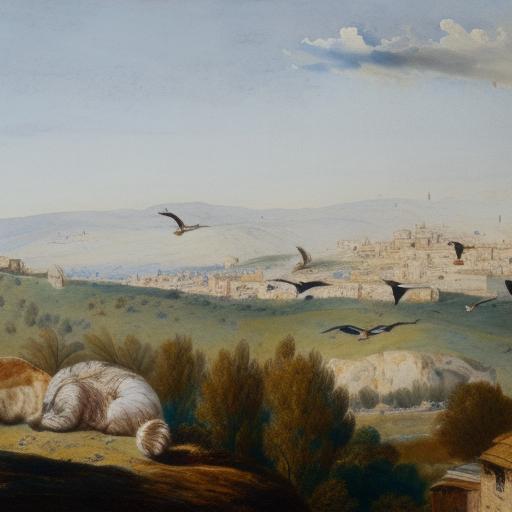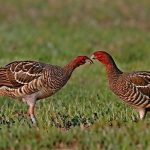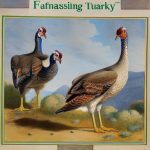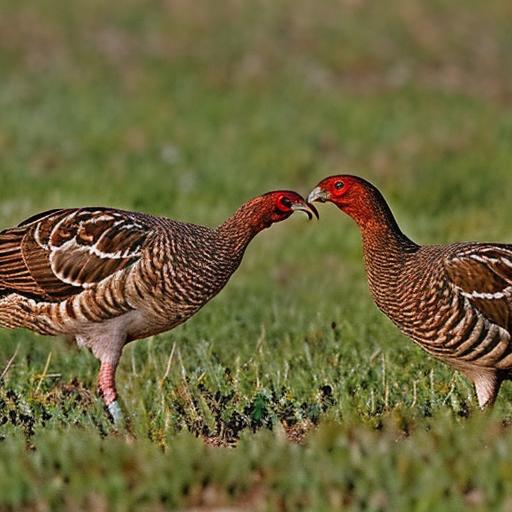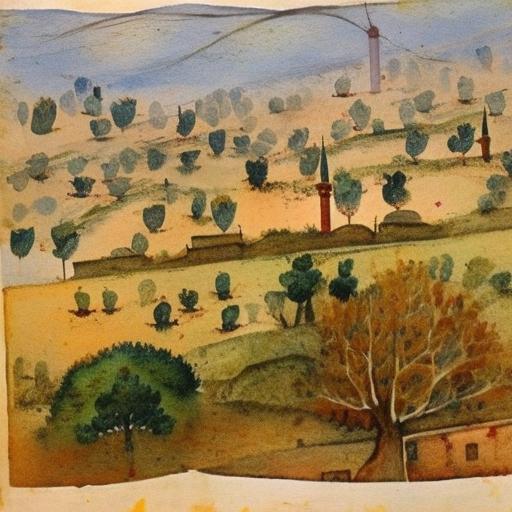Turkey breeds have been an integral part of human civilization for centuries. They have been domesticated for their meat, feathers, and eggs, and have played a significant role in the agricultural industry. There are various breeds of turkeys, each with its own unique characteristics and traits. These breeds can be categorized into heritage breeds, commercial breeds, rare and endangered breeds, wild turkey species, and crossbred varieties. Understanding the different turkey breeds is essential for anyone interested in raising turkeys for commercial or personal purposes.
Key Takeaways
- Heritage breeds of turkeys are traditional breeds that have been around for centuries and are known for their unique characteristics and flavors.
- Commercial breeds of turkeys are specifically bred for mass production and are often raised in large-scale farming operations.
- Rare and endangered turkey breeds are at risk of extinction and efforts are being made to preserve and protect these unique breeds.
- Wild turkey species are the ancestors of domesticated turkeys and can still be found in the wild in certain regions.
- Crossbred turkey varieties are created by breeding different turkey breeds to combine desirable traits and characteristics.
Heritage Breeds of Turkeys
Heritage turkey breeds are traditional breeds that have been raised by farmers for generations. These breeds are known for their ability to thrive in outdoor environments and for their rich, flavorful meat. Some popular heritage turkey breeds include the Bourbon Red, Narragansett, and Standard Bronze. The Bourbon Red is known for its beautiful mahogany feathers and excellent foraging abilities. The Narragansett is prized for its calm temperament and excellent mothering instincts. The Standard Bronze is one of the oldest turkey breeds in the United States and is known for its large size and delicious meat.
Heritage turkey breeds are valued for their ability to reproduce naturally and their resistance to diseases. They are often raised on small farms and are popular among consumers who appreciate the superior taste and texture of heritage breed turkey meat. These breeds are also important for preserving genetic diversity within the turkey population, as they often have traits that are not found in commercial breeds. As a result, there has been a growing interest in preserving and promoting heritage turkey breeds to ensure their continued existence for future generations.
Commercial Breeds of Turkeys
Commercial turkey breeds are specifically bred for mass production and are commonly raised on large-scale farms. These breeds are selected for their fast growth, high meat yield, and efficient feed conversion. The Broad Breasted White and Broad Breasted Bronze are two of the most popular commercial turkey breeds. The Broad Breasted White is the most widely raised turkey breed in the United States and is known for its broad breast and fast growth rate. The Broad Breasted Bronze is similar to the White variety but has a darker plumage and slightly different growth characteristics.
Commercial turkey breeds are typically raised in controlled environments to maximize their growth potential and minimize disease risk. They are often processed at a young age to produce tender, mild-flavored meat that is popular among consumers. While commercial turkey breeds have been successful in meeting the demand for affordable turkey meat, there has been growing concern about the lack of genetic diversity within these breeds. This has led to efforts to promote sustainable breeding practices and preserve genetic resources to ensure the long-term viability of commercial turkey production.
Rare and Endangered Turkey Breeds
Rare and endangered turkey breeds are those that are at risk of extinction due to declining population numbers and limited genetic diversity. These breeds often have historical significance and unique traits that make them valuable for conservation efforts. The American Livestock Breeds Conservancy (ALBC) has identified several rare turkey breeds, including the Jersey Buff, White Holland, and Slate. The Jersey Buff is a small, docile breed with a buff-colored plumage that is at risk of extinction. The White Holland is a historic breed that was once popular in the United States but has since declined in numbers. The Slate is known for its striking blue-gray plumage and is considered critically endangered.
Efforts to preserve rare and endangered turkey breeds include breeding programs, conservation initiatives, and public awareness campaigns. Organizations such as the ALBC work to raise awareness about the importance of preserving genetic diversity within livestock populations and provide resources for breeders interested in raising rare turkey breeds. By promoting the conservation of rare turkey breeds, these organizations hope to ensure that future generations will have access to these unique and valuable genetic resources.
Wild Turkey Species
Wild turkey species are the ancestors of domesticated turkeys and are found in various regions of North America. There are six subspecies of wild turkeys, each with its own distinct characteristics and habitat preferences. The Eastern wild turkey is the most widespread subspecies and is found in the eastern United States and parts of Canada. The Osceola, or Florida, wild turkey is native to Florida and is known for its smaller size and darker plumage. The Rio Grande wild turkey is found in the southwestern United States and northern Mexico and is known for its adaptability to arid environments.
Wild turkey species play a crucial role in maintaining healthy ecosystems by controlling insect populations, dispersing seeds, and providing food for predators. They are also valued by hunters for their challenging behavior and delicious meat. Conservation efforts have been successful in restoring wild turkey populations in many areas where they were once scarce, demonstrating the resilience of these iconic birds.
Crossbred Turkey Varieties

Crossbred turkey varieties are created by breeding different turkey breeds to produce offspring with specific traits or characteristics. Crossbreeding can be used to improve meat quality, increase disease resistance, or enhance growth rates. One example of a crossbred turkey variety is the Royal Palm, which was developed by crossing Bronze and Narragansett turkeys. The Royal Palm is known for its striking black-and-white plumage and is valued for its ability to thrive in free-range environments.
Crossbred turkey varieties can offer unique advantages for farmers looking to raise turkeys with specific traits or characteristics. By carefully selecting parent stock with desirable traits, breeders can create crossbred varieties that excel in various production systems. However, it is important to carefully manage crossbreeding programs to avoid negative effects on genetic diversity and overall population health.
Conclusion and Future of Turkey Breeds
In conclusion, turkey breeds play a vital role in agriculture, conservation, and food production. Understanding the different types of turkey breeds, including heritage breeds, commercial breeds, rare and endangered breeds, wild turkey species, and crossbred varieties, is essential for anyone interested in raising turkeys or supporting conservation efforts. As consumer demand for sustainable, high-quality food continues to grow, there is an increasing interest in promoting heritage turkey breeds and preserving genetic diversity within domesticated turkey populations.
The future of turkey breeds will depend on collaborative efforts between farmers, breeders, conservation organizations, and policymakers to promote sustainable breeding practices, preserve rare and endangered breeds, and support wild turkey conservation initiatives. By working together to protect genetic resources and promote responsible breeding practices, we can ensure that future generations will have access to a diverse range of turkey breeds that contribute to healthy ecosystems, agricultural sustainability, and delicious, nutritious food options.
If you’re interested in learning about different breeds of turkeys, you might also want to check out Poultry Wizard’s article on “What Should You Feed Ducks?” (source). Understanding the dietary needs of ducks can be just as important as understanding the various breeds of turkeys when it comes to raising poultry. Both articles provide valuable insights for anyone looking to expand their knowledge of poultry care and management.
FAQs
How many breeds of turkeys are there?
There are six primary breeds of turkeys recognized by the American Poultry Association: Bronze, Narragansett, White Holland, Black, Bourbon Red, and Beltsville Small White.
Are there other breeds of turkeys not recognized by the American Poultry Association?
Yes, there are other breeds of turkeys that are not officially recognized by the American Poultry Association, such as the Royal Palm, Slate, and Midget White.
What are the differences between the different breeds of turkeys?
The different breeds of turkeys vary in size, color, and temperament. Some are known for their meat production, while others are prized for their ornamental qualities.
Are all breeds of turkeys suitable for meat production?
While all breeds of turkeys can be used for meat production, some breeds are specifically bred for their meat quality and are more commonly used for this purpose.
Can different breeds of turkeys be crossbred?
Yes, different breeds of turkeys can be crossbred to create hybrid turkeys with specific desired traits, such as better meat quality or disease resistance.
Meet Walter, the feathered-friend fanatic of Florida! Nestled in the sunshine state, Walter struts through life with his feathered companions, clucking his way to happiness. With a coop that’s fancier than a five-star hotel, he’s the Don Juan of the chicken world. When he’s not teaching his hens to do the cha-cha, you’ll find him in a heated debate with his prized rooster, Sir Clucks-a-Lot. Walter’s poultry passion is no yolk; he’s the sunny-side-up guy you never knew you needed in your flock of friends!

